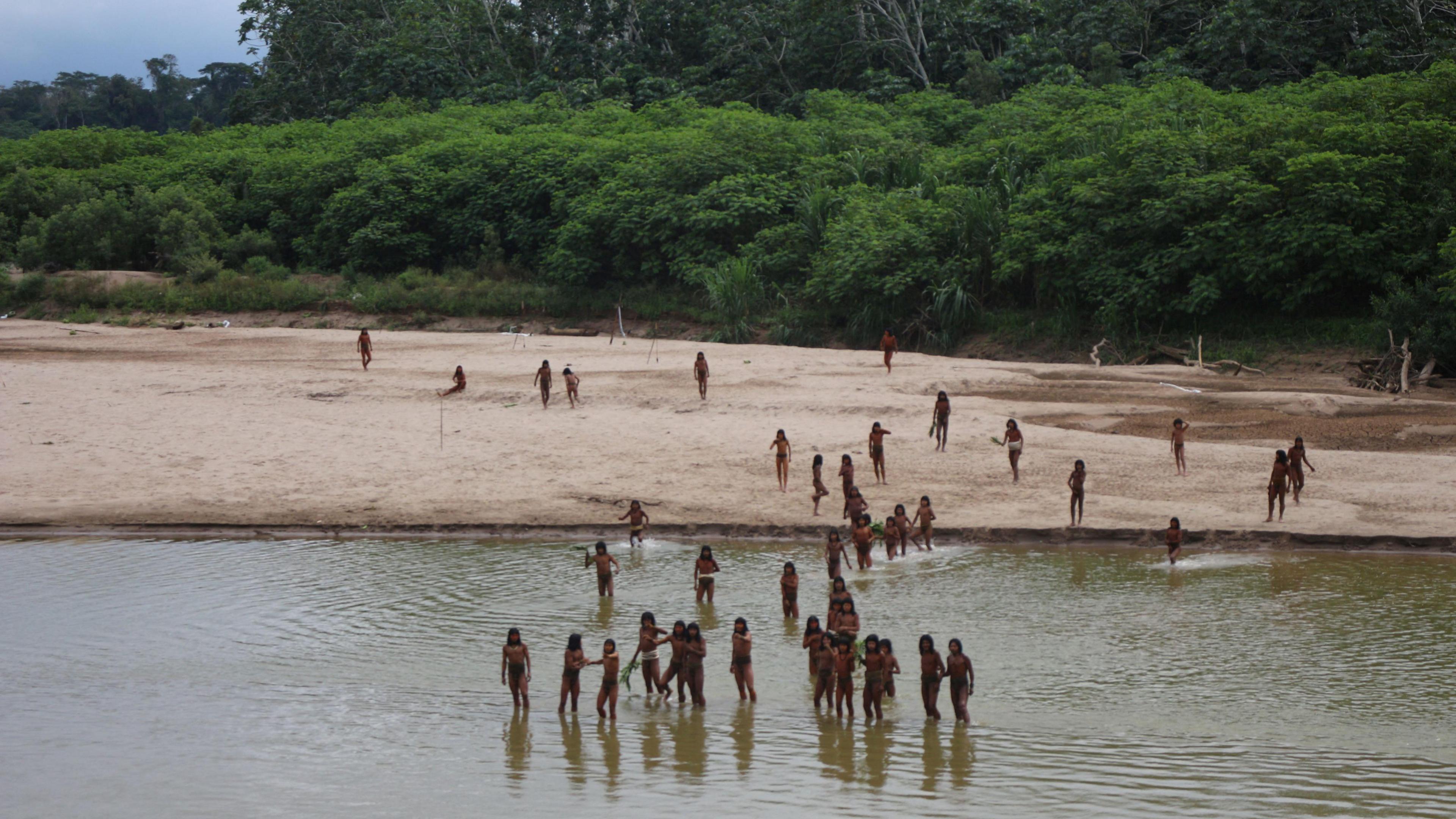Rare pictures of uncontacted Amazon rainforest tribe in Peru

These are members of the Mashco Piro tribe
- Published
A tribe that's never had any contact with the rest of the world has recently been spotted on a riverbank in Peru.
A tribe is a group of people that band together in order to survive, and they often have one leader.
This tribe in Peru - which is in South America - is called Mashco Piro, and it's thought to be the largest uncontacted tribe in the world.
A charity called Survival International, that campaigns for tribal people, says there could be over 750 people in the Mashco Piro tribe.
It's not often so many are seen together in one place, according to Survival International
There are tribes like the Mascho Piro in other parts of the world, and they often live in areas that are largely unknown to people from outside their communities.
As much as we know about our world, there are communities and groups who choose to live in isolation. They do so to protect their way of life, living off and caring for the land.
Read on to find out about some of the most unexplored parts of the Earth...
More questions answered
- Published17 July
- Published17 July
- Published15 July
The oceans
The deep sea is home to some strange creatures like this Sea Butterfly
There is more sea on planet Earth than land - water covers about 71% of the Earth's surface.
Its vastness means it has a huge impact on our global food supply, and even our weather, but despite its importance to our lives, we know relatively little about what goes on deep under the surface.
In fact, over 80% of the ocean still remains unexplored.
Humans know more about the Moon and even Mars than the deep sea.
The Amazon Rainforest
The Amazon Rainforest spans across eight different countries
The Amazon is the world's biggest tropical rainforest - it's 24 times the size of the UK.
One in ten of all known species of life on Earth can be found there, as well as ingredients to crucial medicines.
It is also crucial in the world's fight against climate change, as the vast amount of trees help capture and store a lot of carbon released by fossil fuels.
The Amazon is home to between 400-500 Indigenous tribes.
Because of it's vast size, scientists are still making new discoveries in the Amazon.
North Sentinel Island, Bay of Bengal
This is part of the coast of North Sentinel as seen from above
This small island between India, Bangladesh and Thailand is home to the most isolated tribe on Earth.
They're called the Sentinelese and they live in the forests of North Sentinel Island.
They choose to have little contact with the rest of the world, defending their island against people who try to approach it.
The only photographs of the island have been taken from the sea or from the air - either from boats at least an arrows flight away, or from satellites and helicopters.
Sakha Republic, Russia
This is the mountainous Oymyakonsky District in the Sakha Republic
Russia is the biggest country in the world - and Sakha is found in the far northeast, in a part of the country known as Siberia.
It is very cold (some parts of it are further north than Greenland) and largely uninhabited.
The parts where people do live are absolutely freezing - the mountainous region of Oymyakon is the coldest place on the planet where people live.
Siberia has 30 known tribal groups, which range in size.
The Oroks are thought to have under 200 people, while the Nenet have around 34,000, according to Survival International.
- Published13 June
- Published13 January
- Published26 August 2013
